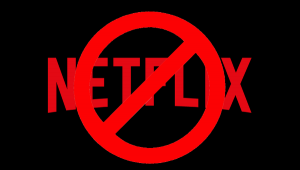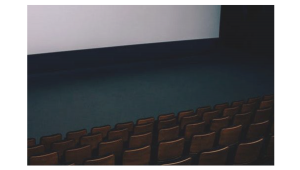If ever there were a time for a matte screen surface, this would be it.
Sneak Peek: Vizio's 120-inch Reference UHDTV

The arrival of these models has been a long time coming. Vizio has been showing prototypes for more than a year, declaring from the outset that they would be technological statement pieces showing what Ultra HD technology can do. That’s unusual for Vizio, a company that has to date made its name driving better and better performance out of ever cheaper HDTVs. Last I looked, $6,000 for a 65-inch was not cheap, and $130K for a special order, 120-inch TV, while not unheard of from the likes of Samsung or LG, is just, well, crazy. If Vizio means to make a statement, they’ve made it loud and clear.
Conceptually, the video technology offered here is not unique to the market, though the execution is unusually high-end. The key features mirror what’s being promoted now for all top-line UHD sets, most notably an extra wide color gamut and HDR (high-dynamic range) capabilities. The first adds many more colors from the set to pick from when trying to reproduce a given object; our current color TV standard is particularly limited in its ability to accurately create deep red, a problem that will be addressed with the advent of wide-gamut sets. The second feature, HDR, allows dramatically brighter highlights on the screen—so that the flash of an explosion, for example, or the piercing and momentary shimmer of sunlight reflected off a passing car, looks much more realistic and engaging. Both will require content captured and encoded with these features in mind, which is coming now in the form of next-gen streaming options from Netflix and Amazon and, eventually, UHD delivered via forthcoming Ultra HD Blu-ray discs and players.
Vizio’s Reference Series sets are compliant with the Dolby Vision specification that seems to be emerging as the crème de la crème of HDR standards, the first to do so. Some less ambitious technical parameters have been established now by the Consumer Electronics Association and other groups for purpose of labeling a television HDR-capable and generating the content. But Dolby Vision seems to be universally accepted as the most demanding spec, which means that UHDTVs that achieve Dolby Vision certification can presumably play any content generated to the lesser standards, but will really strut their stuff with Dolby Vision content. (It's worth noting that, officially, Vizio's Reference sets will only recognize the Dolby Vision format for HDR, but officials said they expect future firmware updates to address emerging HDR content with alternative coding. Vudu has announced it'll stream 18 movie titles in Dolby Vision HDR, so consumers will have some content available out of the box to feed their new Vizio Reference television.)
To achieve the high dynamic range, Vizio is using 384 active LED zones in a full-array, local-dimming backlight. Technically, this calculates out to 21,600 pixels per zone in a display that has 8,294,400 pixels, allowing for brightening or darkening of fairly precise sections of the screen image. (The 384 number applies to both screens, though the pixels are obviously much larger on the 120-inch model.) The set is said to be capable of hitting 800 nits of peak brightness, about twice as bright as a typical LCD TV today. And it is said to do so across the full screen at once if called upon to do so, rather than just being able to punch up small pieces of the image at that brightness (which is how some manufacturers are citing this specification).
The wide color gamut, meanwhile, is achieved in the 65-inch using quantum dot film in the backlight, a solution being tagged these days by other manufacturers as well. No quantum dot film is available for the 120-inch screen size, however, so the company is instead relying on a combination of red and green phosphors with blue LED light in that model to push the color boundaries, with only a small sacrifice in performance compared with quantum dots. The 65-inch model is said to achieve 120% of the P3 digital cinema color gamut being targeted for next-gen content, and actually achieves 87% of the even-wider Rec. 2020 gamut that is built into the Ultra HD spec but was initially considered too ambitious for today’s consumer displays.
Along with other magazines and web entities, Sound & Vision was granted about 90 minutes alone with a sample of the 120-inch model the day after the Vizio press event. That’s video technical editor Tom Norton in the photo above, standing next to the TV. An hour and a half wasn’t much time, but the two of us ran some measurements using our usual test gear and looked at a few pieces of familiar content. Tom is writing up a brief report for our next print issue, and we hope to have a review sample of the 65-inch model in the works soon. In the meantime, I’ll share a few off the cuff comments here.
First: don’t go thinking that scaled 1080p is going to look super crisp on a 120-inch Ultra HD display. The best Blu-ray transfers we played at this massive size took on a little softness we’ve not seen on more conventionally sized UHD screens, even those running north of 70- or 80 inches. On the other hand, a native UHD movie trailer we played from a Sony 4K server looked pretty spectacular, showing very, very fine details, including a startlingly-detailed closeup of the fine white body hair on a woman’s belly. It suggested that a set this large really begs for native UHD content, though it’s not clear to us how much of the softness with 1080p content was attributable to Vizio’s scaling or if a full series of adjustments might have improved detail in some way.
Second: this is one of the best, if not the best, full-array/local-dimming backlit LCDs I’ve seen in terms of contrast and black level, and my comments apply to both the 120-inch model and the 65-inch version we saw in demos the night before. Letterbox bars were about as inky as I’ve seen and at one point, watching the HDR demos of the 65 in a dark room, some white credits on full black background actually elicited my “whoa!” response. The background was a deep, dark, black from which emerged a simply eye-popping white with little or no haloing around the letters. Explosions in an HDR-encoded clip from Man of Steel just leaped off the screen in a way not usually seen, making fire look more like fire than any of us are used to on a video display. Another clip from the extreme snowboarding Blu-ray Art of Flight, again on the 65-inch, was a spectacular demo for what that set could do with 1080p, non-HDR content. It looked stunning, with the white slopes of Alaska delivered with engaging brightness and no loss of details in the undulations and shadows. Tom and I watched the opening of Chapter 11 of Harry Potter and the Deathly Hallows: Part 2 on the 120-inch, the now classic black-level torture scene in which Voldemort and his disciples gather on a rock ledge overlooking Hogwarts, lit only by moonlight as the camera swings around and down. The highlights on the faces popped off the screen about as brightly as I’ve seen on any LCD, and yet the shadow details in the black robes remained visible. This is a remarkably capable backlight that seems to have the ability to deliver deep-as-night blacks while still hitting the highlights.
Colors seemed excellent, with relatively neutral whites and accurate flesh tones, which would correlate more or less to what we saw in the grayscale tracking and color readings on our one run through the numbers on the Calibrated Dark preset mode.
Obviously, we’ll need much more time with a real sample, presumably the more affordable and universally desirable 65-inch model, to really assess what Vizio has wrought here. But on first blush, the Performance series seems to be a very good, true-state-of-the-art Ultra HDTV. Stay tuned for our future review.
- Log in or register to post comments


So I was thinking:this is Vizio, they price things very well. I was expecting the 120 inch TV to be about $4000 at Costco..

Don't think it would fit in the elevator of my condo.

This TV is Amazing. You can cast any movie on Vizio's 120-inch Reference UHDTV usingMovie HD App.






























































